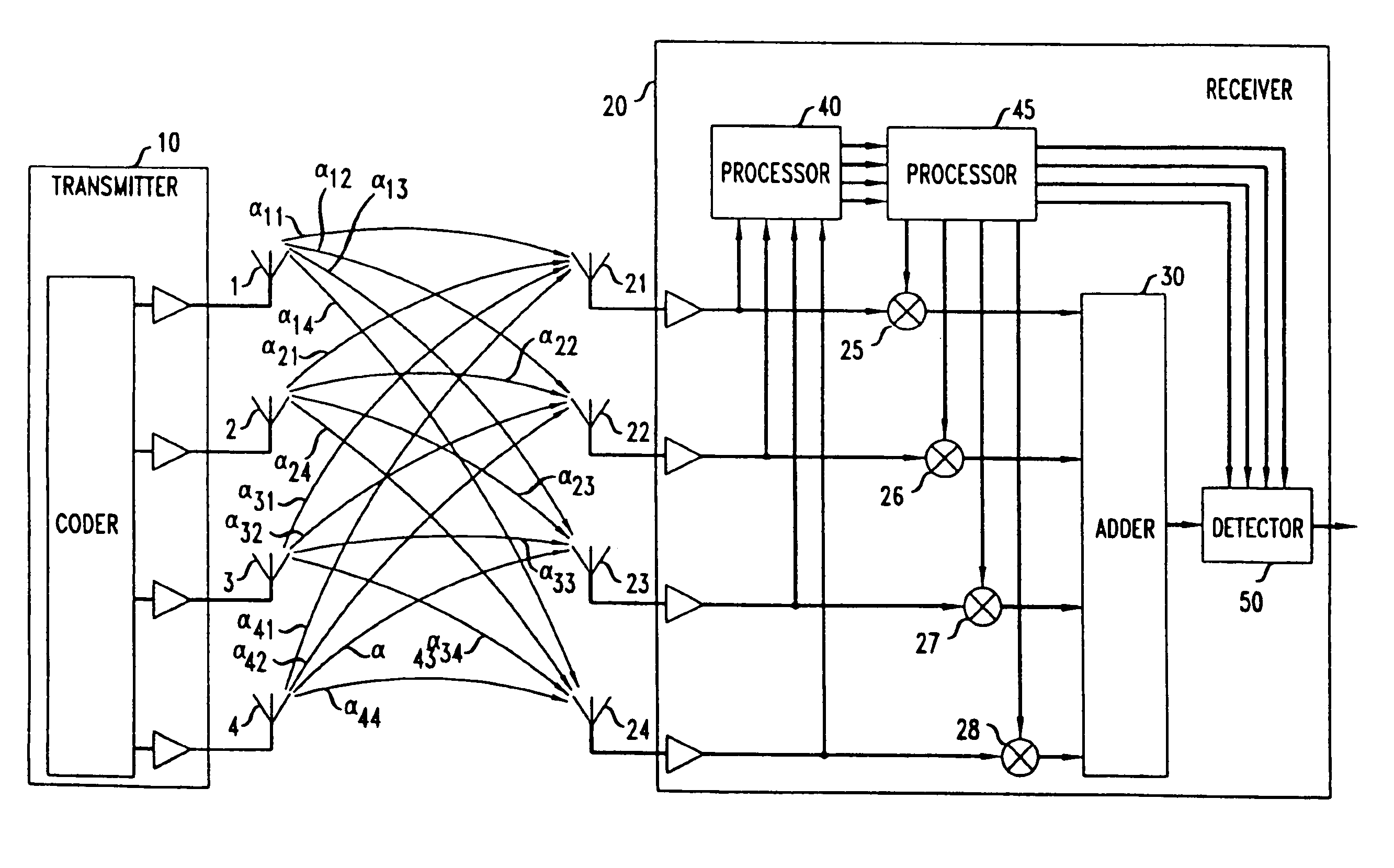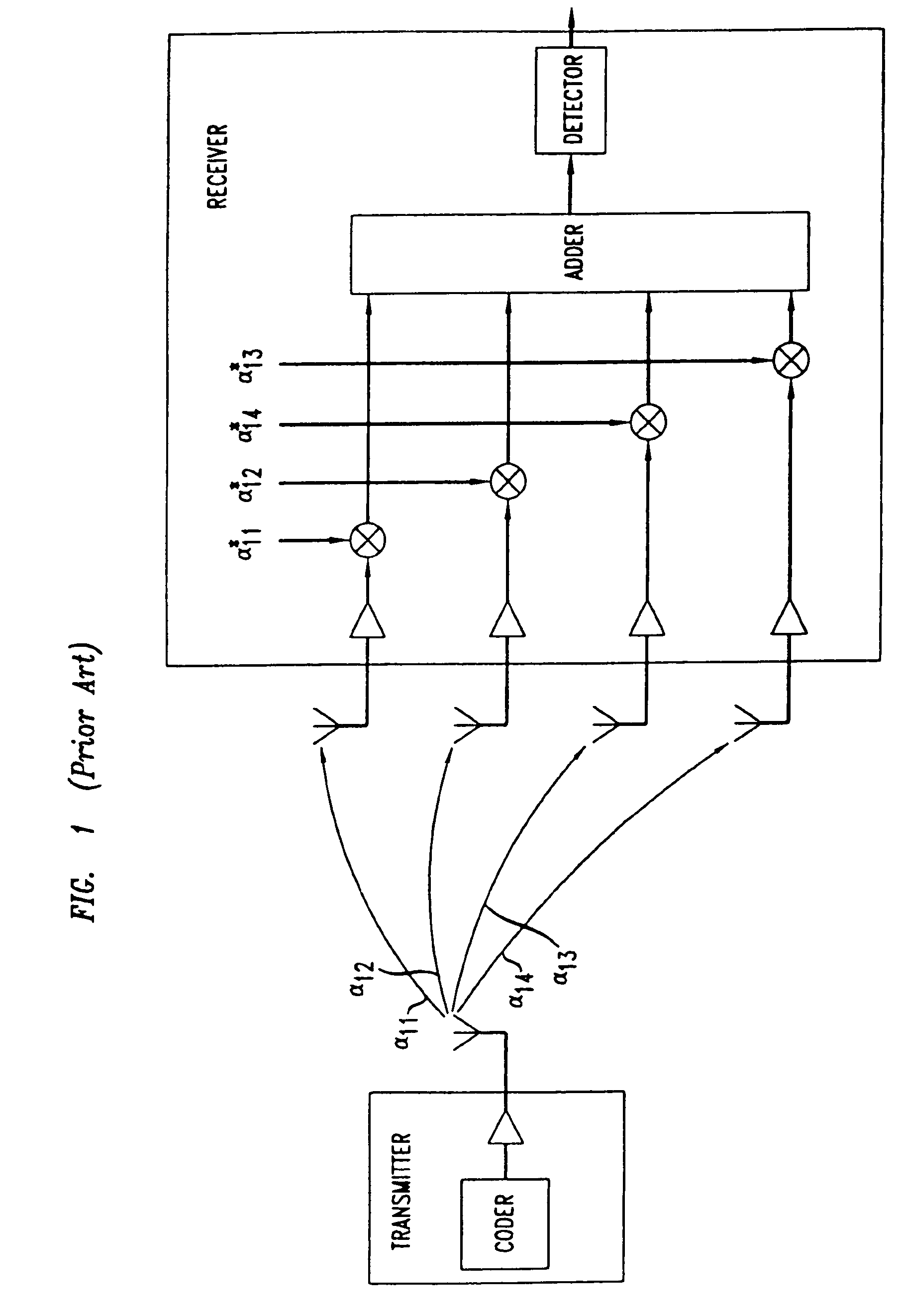Near-optimal low-complexity decoding of space-time codes for wireless applications
- Summary
- Abstract
- Description
- Claims
- Application Information
AI Technical Summary
Benefits of technology
Problems solved by technology
Method used
Image
Examples
Embodiment Construction
[0011]FIG. 2 presents a block diagram of a receiver in accord with an embodiment of the invention. It includes a transmitter 10 that has an n plurality of transmitting antenna 1, 2, 3, 4, and a receiver 20 that has an m plurality of receiver antennas 21, 22, 23, 24. The signals received by the receiver's antennas are multiplied in elements 25, 26, 27, and 28, and summed in adder 30. More specifically, the received signal of antenna j is multiplied by a value, λj, and summed. The collection of factors λj can be viewed as a vector Λ. The outputs of the receiver antennas are also applied to processor 40 which, employing conventional techniques, determines the transfer functions αij for i=1, 2, 3, . . . , n and j=1, 2, 3, . . . , m. These transfer functions can be evaluated, for example, through the use of training sequences that are sent by the different transmitter antennas, one antenna at a time.
[0012]The evaluated αij signals of processor 40 are applied to processor 45 in FIG. 2 whe...
PUM
 Login to View More
Login to View More Abstract
Description
Claims
Application Information
 Login to View More
Login to View More - R&D
- Intellectual Property
- Life Sciences
- Materials
- Tech Scout
- Unparalleled Data Quality
- Higher Quality Content
- 60% Fewer Hallucinations
Browse by: Latest US Patents, China's latest patents, Technical Efficacy Thesaurus, Application Domain, Technology Topic, Popular Technical Reports.
© 2025 PatSnap. All rights reserved.Legal|Privacy policy|Modern Slavery Act Transparency Statement|Sitemap|About US| Contact US: help@patsnap.com



